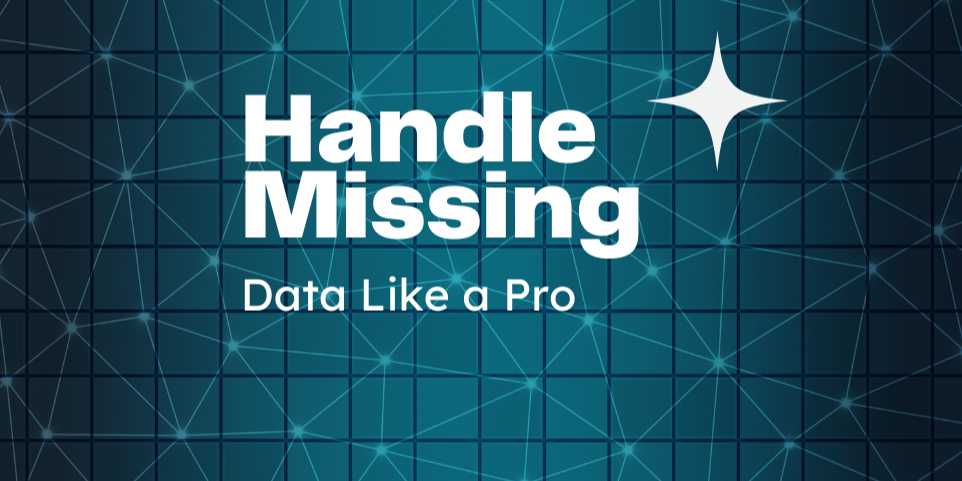Chapters
Handling Missing Data Like a Pro: Smart Strategies Every Data Scientist Should Know

📗 Chapter 4: Strategies for Dropping Missing Values
When Less is More — Smart Removal Techniques for
Cleaner Data
🧠 Introduction
Not all data can (or should) be saved.
In some situations, dropping missing data — whether rows or
columns — is not only acceptable but also the best decision. This
chapter will walk you through when, why, and how to drop missing values
without compromising your dataset’s integrity.
You’ll learn:
- When
dropping is better than imputing
- How
to define intelligent thresholds
- Conditional
row/column dropping
- Group-based
or contextual drops
- Best
practices and caveats
“Sometimes subtraction is addition.” Dropping poor-quality
data can improve clarity and model performance.
🔍 1. When Is It Okay to
Drop Missing Data?
Dropping is ideal when:
- The
column is not critical for your model or analysis
- The
missing percentage is very high (e.g., >50%)
- You
have enough remaining data to train your model
- Imputation
would introduce too much bias or uncertainty
📦 2. Dropping Columns
with High Missingness
Start by calculating percentage missing:
python
missing_percent
= df.isnull().mean() * 100
Drop columns above a threshold:
python
threshold
= 0.5 # 50%
df
= df.loc[:, missing_percent < threshold]
Example Table: Dropping Decision
|
Column |
Missing % |
Importance |
Drop? |
|
Zip Code |
58% |
Low |
✅ Yes |
|
Gender |
0% |
High |
❌
No |
|
Age |
12% |
High |
❌ No |
|
Email |
47% |
Medium |
⚠️
Maybe |
🧑🤝🧑
3. Dropping Rows with Missing Values
If only a few rows have missing values in key columns,
it may be safe to drop them:
python
df
= df.dropna(subset=['Age', 'Income'])
Drop all rows with any missing values:
python
df
= df.dropna()
Warning:
- Avoid
this on datasets with many rows missing a few fields.
- Always
check: df.shape before and after dropping.
➤ Selective Drop Example
python
#
Drop only if Age OR Gender is missing
df
= df[df['Age'].notnull() & df['Gender'].notnull()]
📊 4. Visualization Before
Dropping
Compare row count:
python
print("Before:",
df.shape)
df_cleaned
= df.dropna()
print("After:",
df_cleaned.shape)
Heatmap:
python
import
seaborn as sns
sns.heatmap(df.isnull(),
cbar=False)
This helps visualize where drops will make the most impact.
⚖️ 5. Pros and Cons of Dropping
Data
|
Pros |
Cons |
|
Quick and easy |
Potential loss of
important info |
|
Reduces noise |
Can shrink
dataset too much |
|
Avoids biased or
poor imputations |
May bias analysis if
missing is systematic |
|
Ideal for features with over 60–70% missing |
Not suitable
for time series or streaming |
🤝 6. Group-Based Dropping
Sometimes, only certain groups have poor data.
python
#
Drop users from a location with 90% null values
df
= df[~((df['Country'] == 'Unknown') & (df['Age'].isnull()))]
Or drop columns per group:
python
#
Drop column only for a subgroup
df_group
= df[df['UserType'] == 'Guest']
df_group
= df_group.drop(columns=['Email'])
📈 7. Partial Column
Dropping
Split feature based on null ratio per segment.
python
#
If Age is missing only for Males, drop Age just for that group
df.loc[(df['Gender']
== 'Male') & (df['Age'].isnull()), 'Age'] = pd.NA
df
= df.dropna(subset=['Age'])
🧠 8. Combining Dropping
with Other Cleaning
Drop → then Impute → then Encode:
python
#
Step 1: Drop unimportant columns
df
= df.drop(columns=['ZipCode', 'Address'])
#
Step 2: Drop rows where target is missing
df
= df.dropna(subset=['Target'])
#
Step 3: Impute Age
df['Age']
= df['Age'].fillna(df['Age'].median())
💡 9. Best Practice Rules
for Dropping
|
Situation |
Recommended Action |
|
Feature missing
> 60% and low correlation |
Drop the column |
|
Less than 5% rows missing in key feature |
Drop those
rows |
|
Time series with
missing timestamps |
Avoid dropping — use interpolation |
|
Target variable missing |
Drop those
rows |
|
Training rows
missing too many columns |
Consider conditional
or threshold-based drop |
✅ 10. Drop Strategy Summary Table
|
Drop Type |
Code Example |
Best When... |
|
Drop column
(global) |
df.drop(columns=['ZipCode']) |
Feature is unimportant
& >50% missing |
|
Drop row (global) |
df.dropna() |
Dataset is
large; missingness is small |
|
Drop based on
column |
df.dropna(subset=['Age']) |
Specific features are
mission-critical |
|
Drop by group |
df = df[~((df['Region']
== 'X') & (df['Score'].isnull()))] |
Localized bad
data |
FAQs
1. What causes missing data in a dataset?
Answer: Missing data can result from system errors, human omission, privacy constraints, sensor failures, or survey respondents skipping questions. It can also be intentional (e.g., optional fields).
2. How can I detect missing values in Python?
Answer: Use Pandas functions like df.isnull().sum() or visualize missingness using the missingno or seaborn heatmap to understand the extent and pattern of missing data.
3. Should I always remove rows with missing data?
Answer: No. Dropping rows is acceptable only when the number of missing entries is minimal. Otherwise, it can lead to data loss and bias. Consider imputation or flagging instead.
4. What’s the best imputation method for numerical data?
Answer: If the distribution is normal, use the mean. If it's skewed, use the median. For more advanced tasks, consider KNN imputation or iterative modeling.
5. How do I handle missing categorical values?
Answer: You can fill them using the mode, group-based mode, or assign a new category like "Unknown" or "Missing" — especially if missingness is meaningful.
6. Can I use machine learning models to fill missing data?
Answer: Yes! Models like KNNImputer, Random Forests, or IterativeImputer (based on MICE) can predict missing values based on other columns, especially when missingness is not random.
7. What is data drift, and how does it relate to missing data?
Answer: Data drift refers to changes in the data distribution over time. If drift occurs, previously rare missing values may increase, or your imputation logic may become outdated — requiring updates.
8. Is it helpful to create a missing indicator column?
Answer: Absolutely. Creating a binary feature like column_missing = df['column'].isnull() can help the model learn if missingness correlates with the target variable.
9. Can missing data impact model performance?
Answer: Yes — unhandled missing values can cause models to crash, reduce accuracy, or introduce bias. Proper handling improves both robustness and generalizability.
10. What tools can I use to automate missing data handling?
Answer: Libraries like scikit-learn (for imputation pipelines), fancyimpute, Evidently, DVC, and YData Profiling are great for automating detection, imputation, and documentation.
Tutorials are for educational purposes only, with no guarantees of comprehensiveness or error-free content; TuteeHUB disclaims liability for outcomes from reliance on the materials, recommending verification with official sources for critical applications.
Explore Other Libraries
Please allow ads on our site
Kindly log in to use this feature. We’ll take you to the login page automatically.
Login
Join Our Community Today
Ready to take your education and career to the next level? Register today and join our growing community of learners and professionals.

Your experience on this site will be improved by allowing cookies. Read Cookie Policy
Your experience on this site will be improved by allowing cookies. Read Cookie Policy

Comments(0)